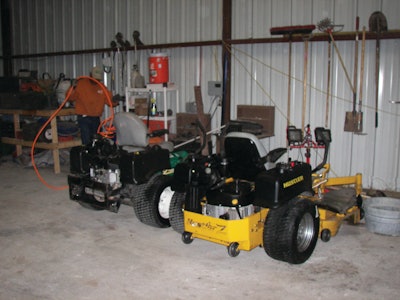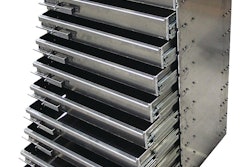
Part of any good pre-season regiment for a landscape company is to re-evaluate work processes to try and identify ways of being more efficient. This should be happening throughout the year, but the month or two before the season starts is an ideal time to sit everyone down and implement changes as necessary.
Four landscape companies from around the country recently told Green Industry Pros about their favorite process improvements of the past year. How do they compare to what you're doing?
Managing man-hours. "Naturally, we want to stay within our budgeted man-hours every month," says Bill Bumgardner of Bumgardners Landscape of Medford, FL. "We started using some software called Timescape to help track hours to jobs. Sometimes a crew might be over budget by four or five hours one week. I was struggling with this. So my account manager and assistant manager said they'd like to take ownership of this. This makes sense; if a crew is going over, these guys will get to the root of the problem and correct it. It's working. We've been under budget by around 5% since starting this."
Tool lists. Bill Chevalier and Michael Sittaro of Denver-area Environmental Landworks have created tool lists that each crew leader signs out for at the start of the season. If something on the list gets lost or stolen, or broken due to negligence, it's the crew's responsibility to replace it. "Foremen are really making sure their guys bring all tools back with them at night now," Sittaro says. Each list represents around $1,500 worth of tools. "We don't want to be too 'corporate' and ask our guys to fill out forms for every little thing, but we do like to put controls in place where they are needed. This is a good example of where controls are needed. We're talking about things like shovels, picks, tape measures, etc. that can easily go missing."
Tool storage. Anne Campbell of Colorado Stoneworks Landscaping in Colorado Springs has also recognized some challenges with respect to tool management. "We had some unexpected growth last year and added a couple of crews; we'd only expected to add one," Campbell tells. "We ran into some issues once in a while where we were short on tools and equipment. So it was taking a lot longer to get the crews out in the morning. We looked at how we could improve our evening and morning routines to make us more organized and efficient. We set up specific tools-per-crew along with designated storage areas for each crew."
Mix it up. Many contractors identify consistency as a way to drive efficiency, i.e. same guys on same crews doing same things as often as possible. At Environmental Landworks, Chevalier and Sittaro have taken to a different approach. "We don't want our guys to get stale, so we mix up crews once in a while," Sittaro says. "Some employees don't like it because they like consistency to feel more comfortable, but we've found that it has been helpful. Guys share more and learn more now."
"We've also ramped up our cross training," Chevalier adds. He's not just talking about field workers learning how to do several tasks. "We have our office staff help with estimating, and may even take them out to a jobsite to see how things work. We have our managers spend time with office staff to see how they enter data and file reports. This helps managers better understand the importance of taking good job notes, accurately allocating costs to jobs, and so on."
Sales scripts. Craig den Hartog of Emerald Magic Lawn Care in Holtsville, NY, has started the process of scripting all client interactions. "It seems like this would be a lot of work, but if you look over the course of a year, there are less than a dozen specific client-request scenarios," den Hartog points out. "If you role play and list the recommended solutions to these issues, customer satisfaction will improve. On that same note, we are looking to provide more one-call resolution to client requests. If you respect the client's time, that client will be more loyal when your competition comes knocking."




















